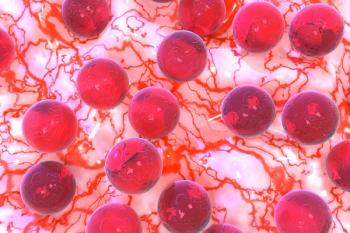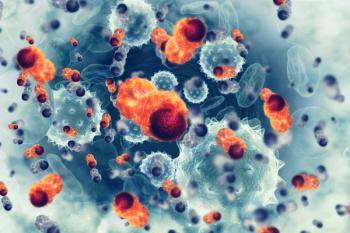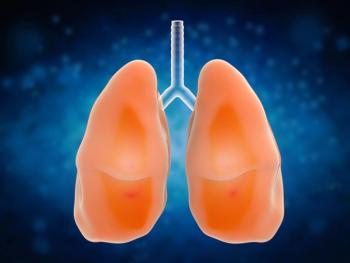
ODAC Votes Against 2 Belantamab Mafodotin Combinations in Multiple Myeloma
ODAC voted against the favorability of the agent in combination with dexamethasone and pomalidomide or bortezomib in multiple myeloma.
The FDA’s Oncologic Advisory Drug Committee (ODAC) voted 5-3 against the favorability of the proposed dosage of belantamab mafodotin-blmf (Blenrep) in combination with dexamethasone and bortezomib (Velcade; BVd) as a treatment for patients with multiple myeloma who have received at least 1 prior line of therapy.1 Additionally, the panel voted 7-1 against the favorability of the proposed dosage of belantamab mafodotin in combination with dexamethasone and pomalidomide (Pomalyst; BPd) in the same patient population but including prior treatment with lenalidomide (Revlimid).
“This is the US FDA, so the proposed patient population is [US] patients. The clinical development program enrolled almost no patients in the US––it precludes any assessment of the benefit-risk profile in the US,” Daniel Spratt, MD, chair and professor in the Department of Radiation Oncology and member of the Developmental Therapeutics Program at Case Comprehensive Cancer Center, said at the ODAC meeting. “It is disappointing…that across [US-based] institutions, [they] can’t enroll a few dozen patients to be able to get this drug optimized and available for patients in the US.”
In August 2020, the
The FDA
Developers proposed indications for the 2 belantamab mafodotin-containing regimens for all adult patients with multiple myeloma. The ODAC convened to discuss and vote on whether findings from the phase 3 DREAMM-7 and DREAMM-8 trials were sufficient to support a favorable risk/benefit profile for second- or later-line BVd and BPd regimens in patients with multiple myeloma.
DREAMM-7 Data
Results from the phase 3 DREAMM-7 trial published in the Journal of Clinical Oncology revealed that the median PFS was 36.6 months (95% CI, 28.4-not reached [NR]) in the BVd arm vs 13.4 months (95% CI, 11.1-17.5) with standard of care (SOC; HR, 0.41; 95% CI, 0.31-0.53; P <.00001). The respective 18-month PFS rates were 69% and 43% in each arm.5
Furthermore, findings presented at the
The objective response rate (ORR) in the BVd and SOC arms were 83.1% (95% CI, 77.8%-87.6%) vs 71.3% (95% CI, 65.3%-76.8%). Furthermore, the median DOR in each respective arm was 40.8 months (95% CI, 30.5-NR) vs 17.8 months (95% CI, 13.8-23.6).
Patients 18 years and older were randomly assigned 1:1 to receive BVd or daratumumab (Darzalex) plus bortezomib and dexamethasone (DVd). Those in the investigational arm received 2.5 mg/kg of intravenous belantamab mafodotin every 3 weeks with bortezomib and dexamethasone and 16mg/kg of intravenous daratumumab weekly for cycles 1 to 3 and every 3 weeks from cycles 4 to 8. For cycles 9 and beyond, patients received 2.5 mg/kg of intravenous belantamab mafodotin every 3 weeks or 16 mg/kg of intravenous daratumumab every 4 weeks.
In the trial, any-grade adverse effects (AEs) occurred in all patients in the BVd and DVd arms, with 100% of AEs in the BVd arm and 95% of AEs in the DVd arm related to study treatment. Grade 3 or 4 AEs occurred in 95% and 78% of the respective patient groups.
Dose delays or reductions related to AEs occurred in 95% and 75% of the BVd arm, respectively, vs 76% and 59% in the DVd arm. AE-related discontinuations occurred in 32% and 19% of the respective arms. Serious AEs occurred in 21% and 13% of patients in each arm, respectively, 11% and 8% of which were fatal.
DREAMM-8 Data
Phase 3 DREAMM-7 trial efficacy data published in the Journal of Clinical Oncology revealed that the median PFS was NR (95% CI, 20.6-NR) in patients treated with BPd compared with 12.7 months (95% CI, 9.1-18.5) among those treated with DVd (HR, 0.52; 95% CI, 0.37-0.73; P <.001), with respective 12-month PFS rates of 71% and 51%.7 The ORR in respective arms were 77% (95% CI, 70.0%-83.7%) and 72% (95% CI, 64.1%-79.2%).Additionally, the median DOR in each arm was NR (95% CI, 24.9-NR) vs 17.5 months (95% CI, 12.1-26.4).
Patients in the trial were randomly assigned to receive BPd or DVd. Patients in the BPD arm received 2.5 mg/kg of intravenous belantamab mafodotin on day 1, cycle 1 and 1.9 mg/kg of the agent on day 1 of subsequent cycles; 4 mg of oral pomalidomide taken days 1 to 21; and 40 mg of dexamethasone on days 1, 8, 15, and 22 of 28-day cycles.
Regarding safety, grade 3 or 4 AEs were observed in 91% of the BPd arm and 73% of the DVd arm. Furthermore, AEs led to discontinuation of any study treatment in 15% and 12% of the respective arms. Serious AEs occurred in 63% of the BPd and 45% of the DVd arms, of which 11% and 11% were fatal.
References
- July 17, 2025, Meeting of the Oncologic Drugs Advisory Committee (ODAC). FDA. Streamed live July 17, 2025. Accessed July 17, 2025. https://tinyurl.com/mhafuuy8
- FDA granted accelerated approval to belantamab mafodotin-blmf for multiple myeloma. News release. FDA. August 5, 2020. Accessed July 17, 2025. https://bit.ly/3hsnUFF
- GSK provides update on DREAMM-3 phase III trial for Blenrep in relapsed/refractory multiple myeloma. News release. GSK. November 7, 2022. Accessed July 17, 2025. https://bit.ly/3FYNEnB
- Blenrep combinations accepted for review by the US FDA for the treatment of relapsed/refractory multiple myeloma. News release. GSK. November 25, 2024. Accessed July 17, 2025. https://tinyurl.com/4wjtdf3t
- Mateos MV, Robak P, Hus M, et al. Results from the randomized phase III DREAMM-7 study of belantamab mafodotin (belamaf) + bortezomib, and dexamethasone (BVd) vs daratumumab, bortezomib, and dexamethasone (DVd) in relapsed/refractory multiple myeloma (RRMM). J Clin Oncol. 2024;42(suppl 36):439572. doi:10.1200/JCO.2024.42.36_suppl.439572
- Hungria V, Robak P, Hus M, et al. Belantamab mafodotin, bortezomib, and dexamethasone vs daratumumab, bortezomib, and dexamethasone in relapsed/refractory multiple myeloma: overall survival analysis and updated efficacy outcomes of the phase 3 DREAMM-7 trial. Blood. 2024;144(suppl 1):772. doi:10.1182/blood-2024-200336
- Trudel S, Beksac M, Pour L, et al. Results from the randomized phase 3 DREAMM-8 study of belantamab mafodotin plus pomalidomide and dexamethasone (BPd) vs pomalidomide plus bortezomib and dexamethasone (PVd) in relapsed/refractory multiple myeloma (RRMM). J Clin Oncol. 2024;42(suppl 17):LBA105. doi:10.1200/JCO.2024.42.17_suppl.LBA105
Newsletter
Stay up to date on recent advances in the multidisciplinary approach to cancer.


















































































